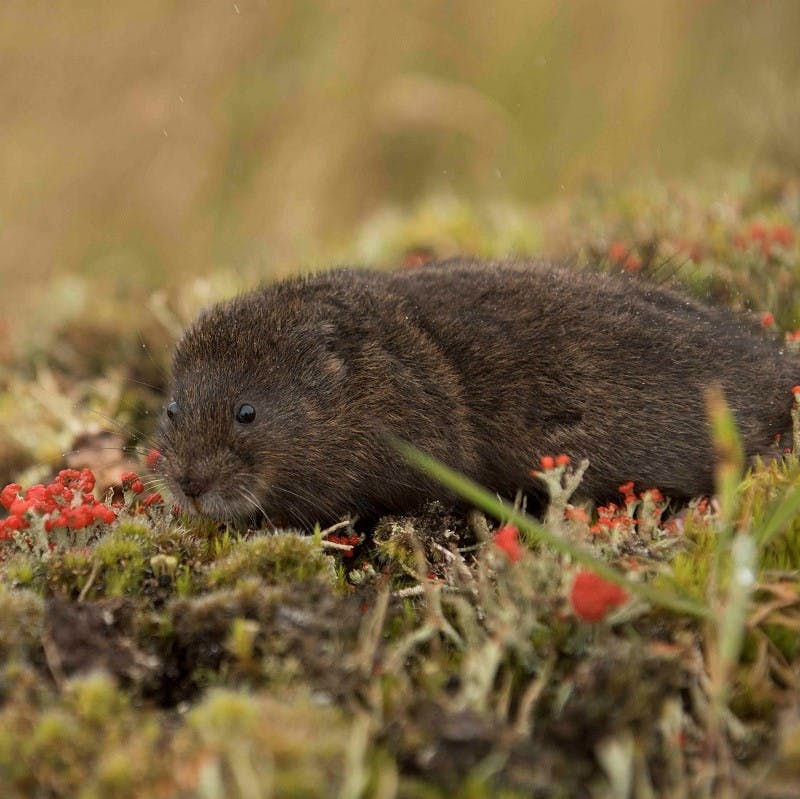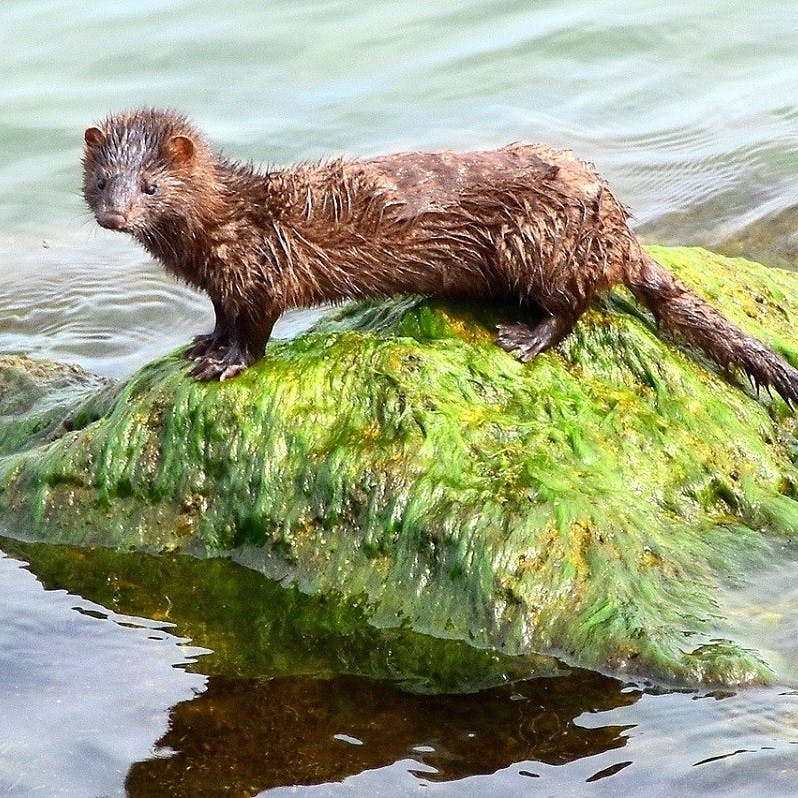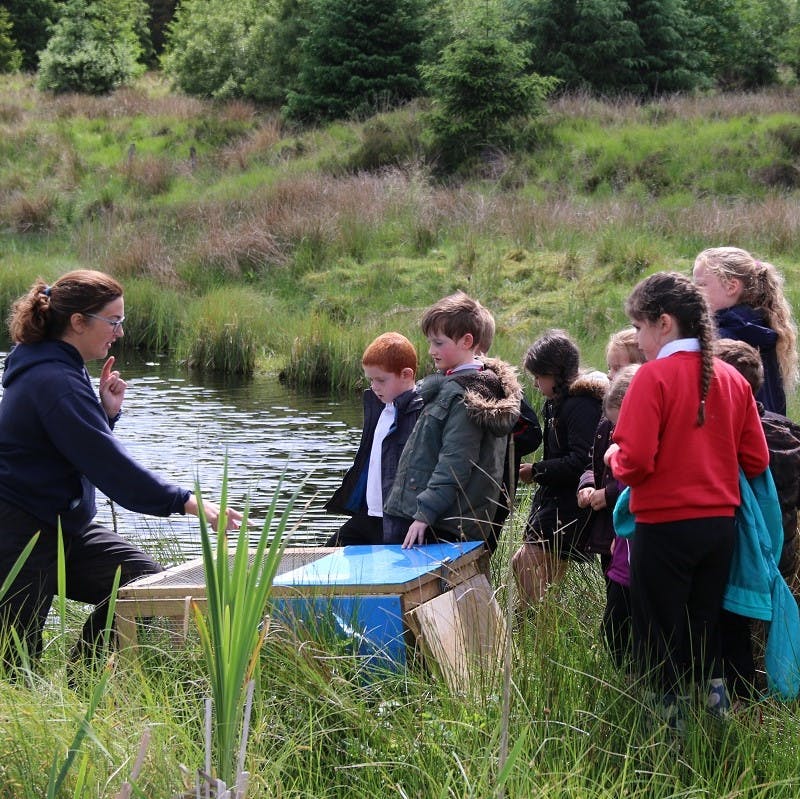- Budget spent: £1,400
- Status: Implemented
It brings us great joy to communicate the impact of this rewilding project. At the centre of its purpose is a small mammal adored across the UK – the water vole. Once found in abundance in our rivers, this loveable riverside dweller has sadly lost a big part of its population. Read on to find out the causes of its decline, why water voles are so important to their ecosystem, and how we helped in the effort to restore their numbers.
A small animal with a big impact
Despite its small size, the water vole (Arvicola amphibius) has a large role to play in shaping its ecosystems. As small as a rat but more similar in looks to a beaver, water voles are important ecosystem engineers, creating complex riparian habitats through their burrowing and feeding behaviour to support a host of other plant and animals.
Unfortunately, the water vole is one of the UK’s fastest declining mammals. In the 1990’s, the population crashed by 90% and many populations disappeared altogether. Ambitious reintroductions projects have since been established to restore water voles to areas where they are missing, and we’re excited to be supporting this important work.

The Intervention
Kielder, in the north of England, was once home to a thriving population of water voles before the population went locally extinct in the 1980s. Thanks to the hard work of the Northumberland Wildlife Trust, Forestry England the Tyne Rivers Trust, water voles have been returned to the area once again after an absence of around 30 years.
Over 1,500 water voles have been bred in captivity at a specialist facility in Devon and released into Kielder as part of the Restoring Ratty project. In June 2021, we supported their work to release a further 177 water voles, providing funding to help transport voles from the breeding centre to the release site.

Learn more about why we have helped water vole reintroductions
One of Britain’s most threatened mammals
The water vole is thought to have disappeared from 94% of its former range in the UK.
Habitat loss and inappropriate wetland management as a result of agricultural intensification has played a significant role in the decline of the water vole. But it was the introduction of the North American mink (Neovison vison) that really pushed water voles to the brink.
American mink became established in the UK after escaping and being deliberately released from fur farms. They have since wiped out entire populations of water voles across the UK. The reason water voles are so vulnerable to predation by this new predator is because they have no natural defences to protect themselves. The water vole’s usual tactic to escape predation is to dive underwater and kick up a ‘smoke screen’ of dirt, but mink are strong swimmers and can smell underwater, making this strategy ineffective.
Another tactic is to run into their burrows but female and juvenile mink are small enough to fit. In winter, when adult water voles and their offspring take shelter in their burrows, a mink can wipe out the entire population.

A keystone species - positively impacting others
Water vole conservation is important for the continued survival of the species in the UK. It is also important because water voles play an important role in the wider ecosystem. As a keystone species, water voles create the conditions for other animals to thrive. They increase habitat complexity and plant community diversity through their burrowing and grazing behaviour. Their decline therefore, has the potential to reduce habitat complexity and plant diversity in riparian areas. They are also an important prey species for a number of Britain’s most charismatic predators, including otters, marsh harries and golden eagles.
The public has been drawn to the battle to save 'ratty' the water vole, a character in the classic novel Wind in the Willows. We hope that being part of the collective effort to win this battle will spark more imagination - to see this animal settle safely in our waterways once more.
To learn about more rewilding interventions around Britain, browse through our other rewilding projects. If you want to explore articles written about a range of rewilding topics, head over to our rewilding blog.

the team behind the project

Hannah Kirkland - Mossy Earth